As mentioned in Part 1 of our Cruising Southeast Asia posts, we needed a less expensive place to hang out for about a week before our sail date from Singapore. After spending overnight at the amazing Changi Airport in Singapore, it was time to board the plane to Krabi, Thailand. Ao Nang is the beach town closest to Krabi.

We decided to go here because we had read about the unique karst formations and Railay Beach. The cruise would be stopping in at Phuket, another beach destination on our list of go-to places, so why not try a different beach. It made more sense to stay in southern Thailand because we were returning to Singapore in a week for the cruise. Our plan was to chill for a week and get over jet lag. Turns out it was a good plan because it took us almost that long. Our sleep hours were normal, but we were always tired…maybe it was the heat.
First Impressions of Thailand
Riding in the shuttle bus from the Krabi Airport to Ao Nang, it struck both of us immediately, something was familiar about this first introduction to Thailand. But we couldn’t put our fingers on it. Then it hit us: while Singapore is as first-world as Western Europe and the US, Thailand reminded us of Latin America. Only the signs were not in Spanish but in something that we couldn’t even read.
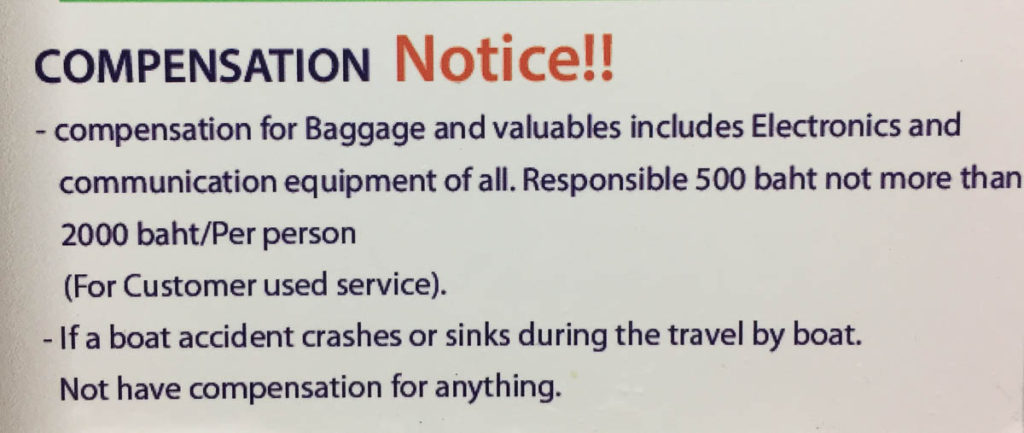
The similarities stuck with us our entire weeklong stay, as so many aspects reminded us of Latin America. The uneven sidewalks and the challenge of crossing the street. The outlandish (to us) configurations of electrical wires (even in larger cities), being unable to drink the water, and having to put toilet paper in a trash bin, due to small pipes. Also, the pickup trucks driving down the street blasting out their latest offers. In this case it was about a Muy Thai (Thailand’s boxing sport) event. Two major differences: streets and sidewalks here were mostly trash-free, and we had no concerns when walking after dark because there were a lot more people out and about.
An Unforeseen Challenge
Some trepidation did occur before we set off because we didn’t know what to expect. But now we did, with the one additional challenge of understanding the written and spoken language. Even Google Translate wasn’t much help. We’re not sure if it’s because there are no spaces between words (truly?!) or the different characters. For whatever reason, Google Translate failed us when using our phones’ cameras when trying to decipher menus or decode product ingredients. Luckily lots of people spoke English.
Our Airbnb in Ao Nang
At $44 per night, the location of our Airbnb was great, about two blocks from the main busy street. The property had an onsite restaurant and spa.
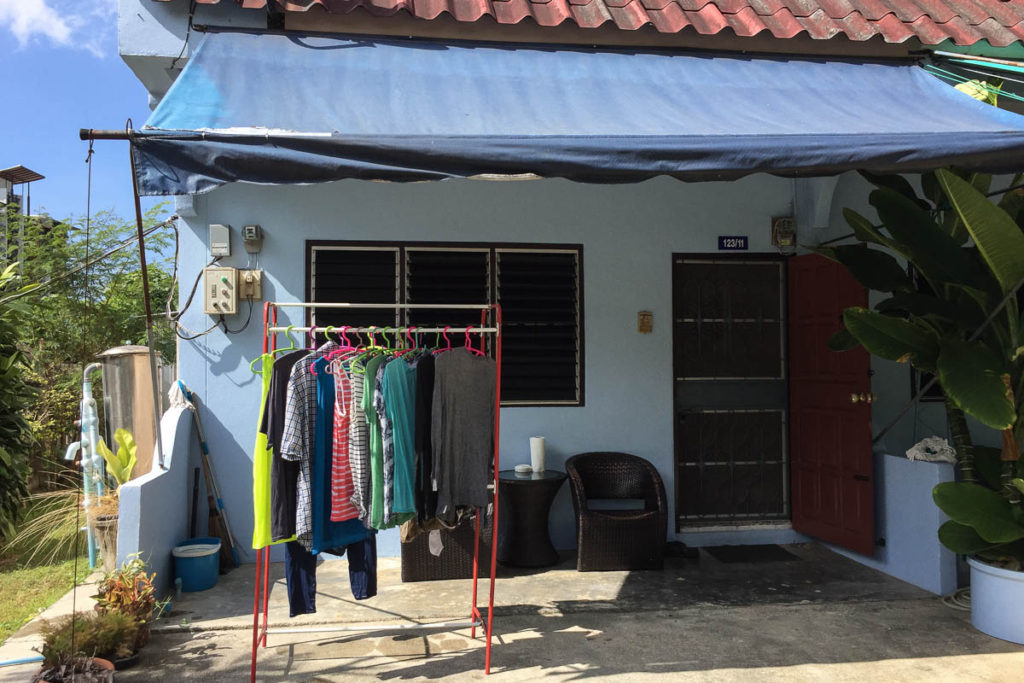
It was more like a guest house, with rooms that have their own small kitchen and living room. In addition, it had two features that we hadn’t seen before: a “poor man’s bidet”, a term Ian coined to describe what was basically a short garden hose with the usual garden hose nozzle at the end (hmm…how to use it without getting water everywhere). And the shower head was just another fixture on the bathroom wall, no shower stall, no curtain, nothing. The entire bathroom got wet when we showered. We would come to learn that this shower situation is not uncommon in many places throughout Southeast Asia.
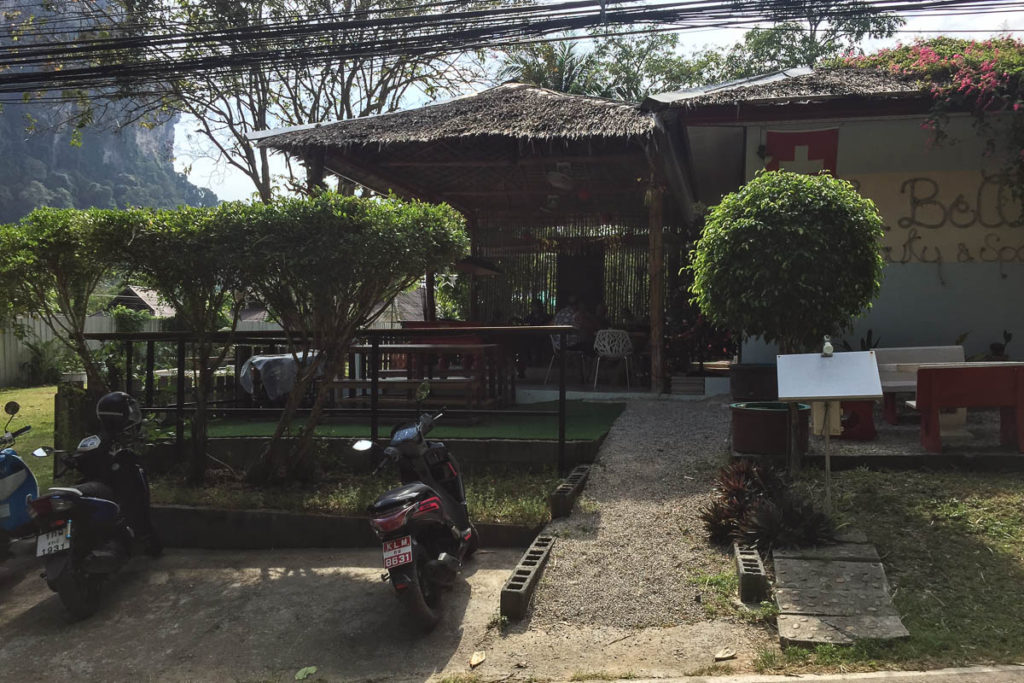
Tropical Heat
Our hosts at the Airbnb were great and made us feel at home. We had just one problem, A/C only in the bedroom. We knew this before booking but guess in two years, somehow (really?!) we had forgotten what tropical hot felt like. The last time we’d felt like this was when we visited Tamarindo or Cartagena. Luckily, we had fans throughout the space. The apartment cooled down a little by morning, but that first blast as we left the air-conditioned bedroom in the morning was quite eye opening. By early afternoon, it was too hot to stay in the apartment; it cooled down a little after dark.
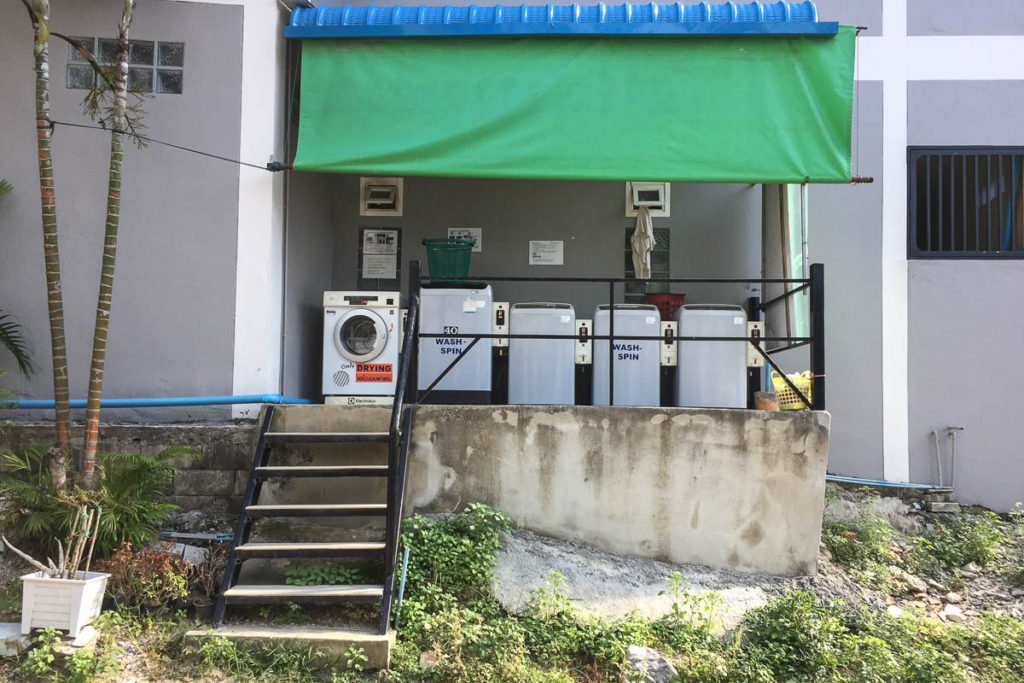
So, we hung around the room in the morning, went out to lunch and then to the beach, returning about the time it got dark, showered and usually grabbed dinner at the guesthouse restaurant. The prices were a little higher than some other places in town, but quite reasonable. And the food was yummy, and the people friendly.
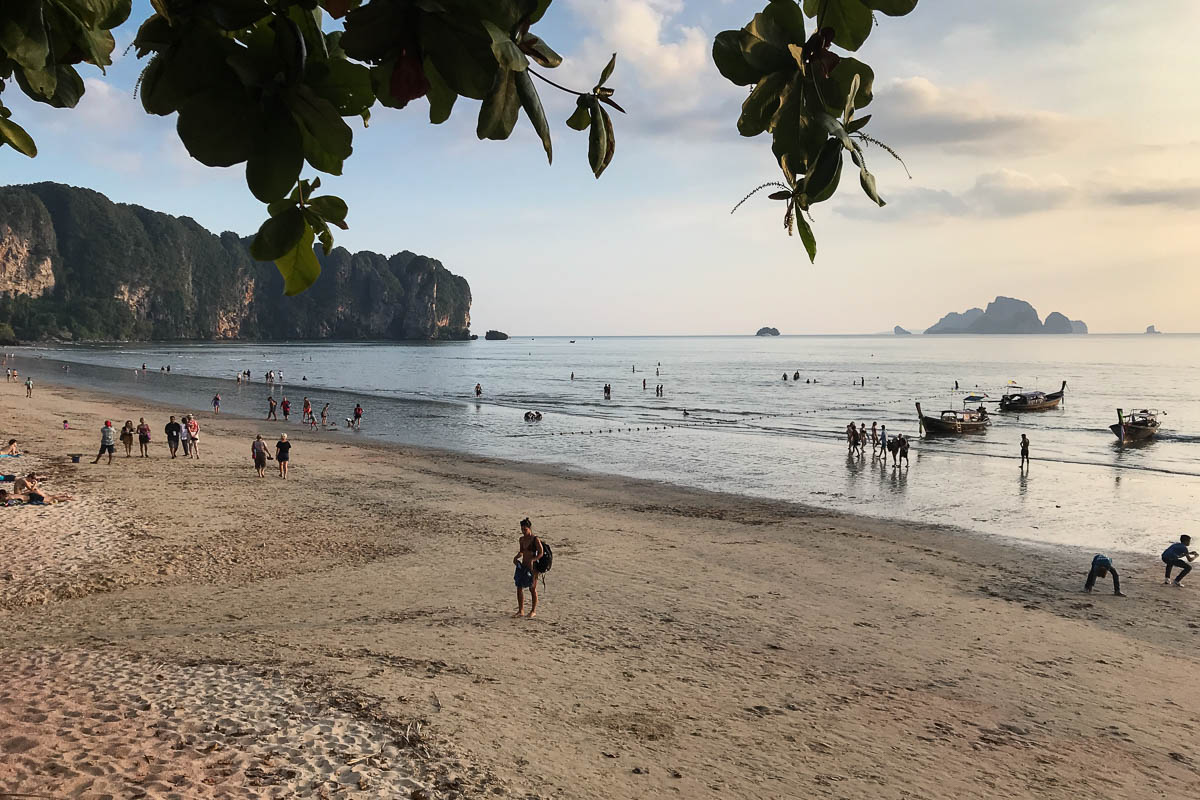
Our First (and Last?) Thai Massages
On our last day, we scheduled hour-long Thai massages at our guesthouse spa, La Belle Beauty and Spa, for both of us ($10 each), which we got to do simultaneously, Ian on the floor and Ann on a table. While we’ve certainly had massages before, we’d never had a Thai massage. The masseuses were very good, as every time that they stressed a joint and it felt like if they went any further something would break, they backed off. But by the end, we both felt like we had been beat up. Ian doesn’t think this is an experience he needs to repeat. Ann is willing to give it another try to see if it would be different someplace else with a different masseuse.

Grocery Shopping in Thailand
On the first night, after getting some Thai money (baht) out of an ATM, we decided to do a little grocery shopping, our usual modus operandi on the first day in a new place. By the way, all ATM’s in Thailand charge the same fee which works out to be about $7, so the plan was to make a few large withdrawals. We went to the nearest large grocery store (which wasn’t very large) and wandered around the store gaping at the prices. Like in Latin America, we also had a hard time finding yogurt without sugar, our preferred breakfast food.
We had heard that people in Thailand eat out a lot because it was cheaper than to buy ingredients to cook at home. As a result, we generally ate two meals a day out. If we were too tired or lazy to go out for dinner, then we just had a few crackers, cheese, and fruit.
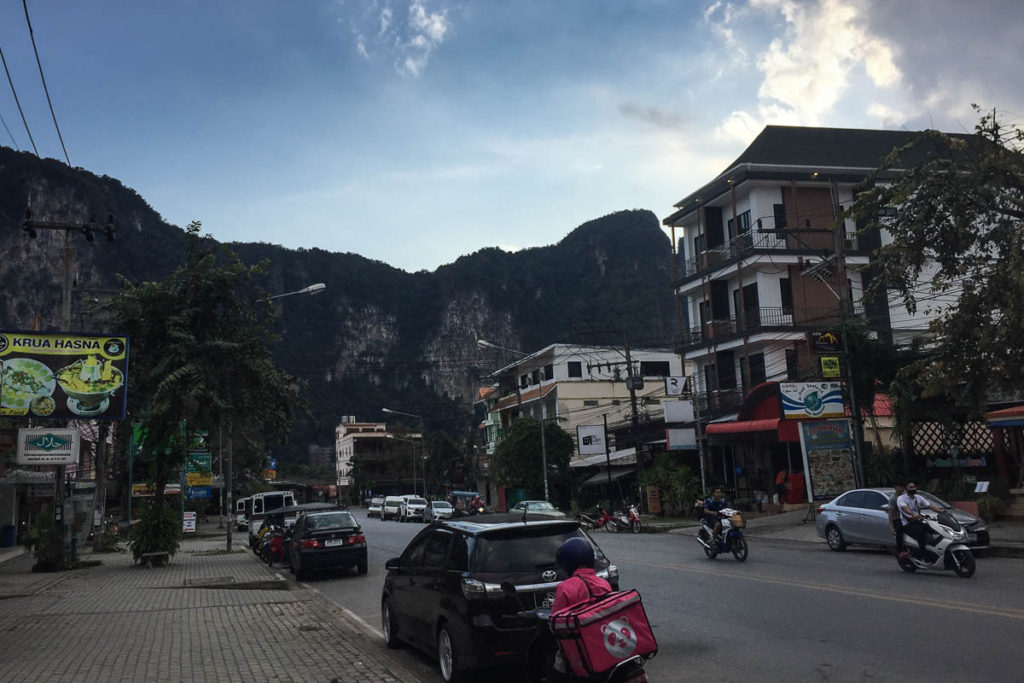
Another thing to keep in mind is that most smaller grocery stores do not sell ground coffee (forget about decaf), only instant. This includes the 7 Elevens on just about every other block. The grocery store in Ao Nang was big enough to sell a couple of ground coffees, so Ann could get her morning fix. Luckily, Ian brought enough decaf tea bags from the US so he started drinking tea for breakfast, skipping coffee totally.
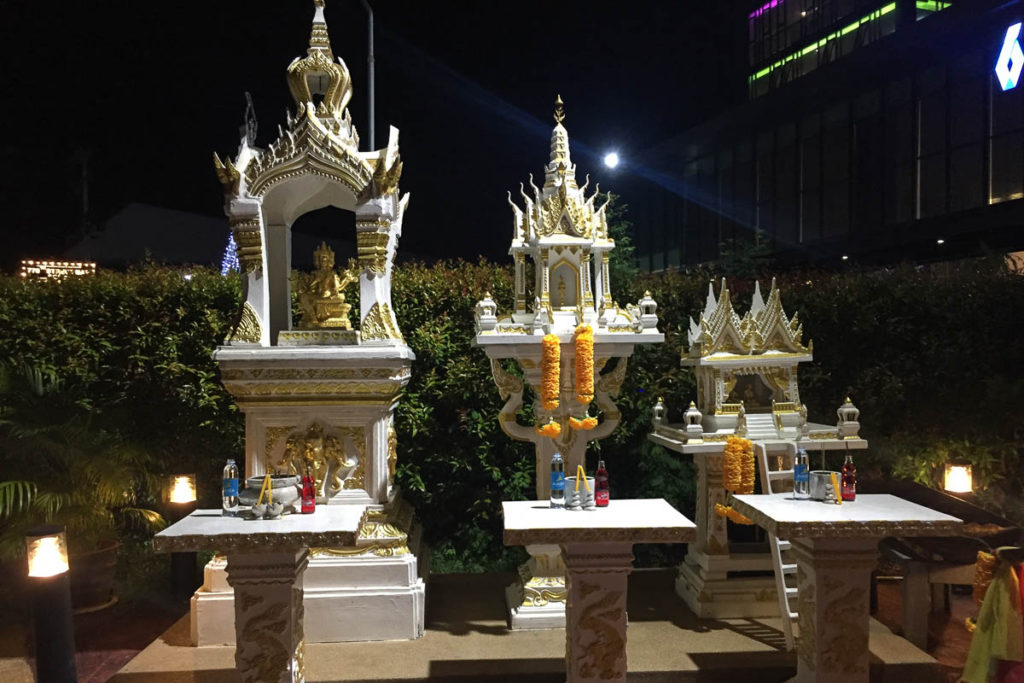
Eating Out in Thailand and Other Parts of Southeast Asia
One of our major concerns with Southeast Asia was MSG in the food because it can trigger a migraine for Ian. Apparently even if the restaurant doesn’t use MSG, it might be in curry or soup mixtures that they are using. Before leaving on this trip, we had done some research and found out that vegan and Halal (MSG is against Muslim dietary rules) restaurants are safe. As luck would have it, our Airbnb was right in the middle one of the Muslim sections of town, so eating out was never a problem. If we weren’t eating at a Halal restaurant, we would avoid the curries and soup. Halal or not, it was pretty much all the same Thai food, which just happens to be one of our favorite cuisines.
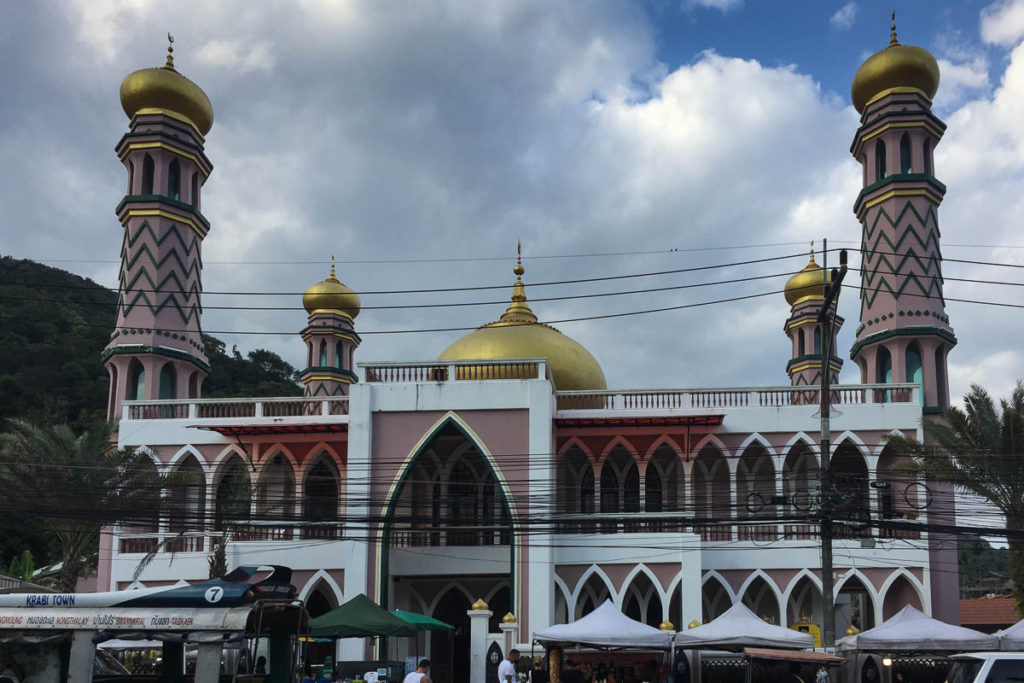
And being in a Muslim neighborhood, we got to hear the call to prayer several times a day. Something that has a certain not unpleasant familiarity for us after our various travels, particularly bringing back fond memories of Istanbul.
Cost of Food and Drink
As already mentioned, eating out is very inexpensive as long as you are willing to eat Thai food, which was just fine by us. Ian decided we needed to do a comparative taste test of one of our favorite dishes. After five days of Pad Thai at one meal a day, he finally said enough. The food is delicious, we don’t know how they sell it so cheap. If we were eating at a small family restaurant, Pad Thai or fried rice was usually 50-70 baht ($1.60 – $2.30). Of course, we had to add Thai Iced Tea for another $1-2. For dessert, we fell in love with mango smoothies (just mango, ice and a little water whipped up in a blender) for another $1.50. All together, we were eating out for less than $7-9 for the two of us.
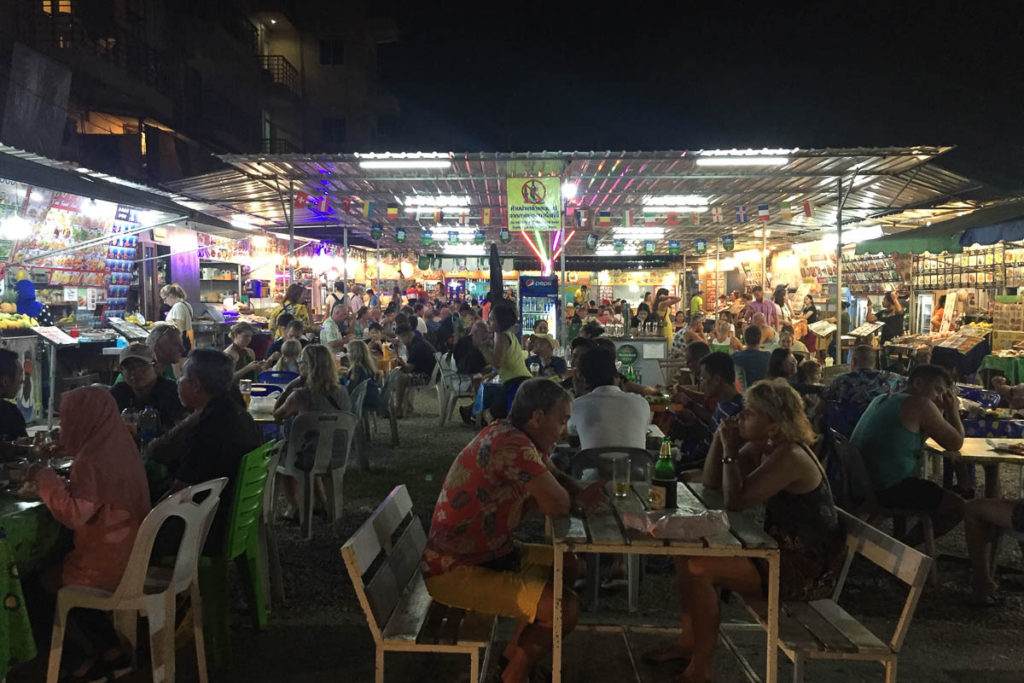
And since we were in a beach town, the dress was always casual, T-Shirt, shorts, and flops.
The Sale of Alcohol in Ao Nang
In Ao Nang, stores cannot sell alcohol before 5 pm, which tripped us up a couple of times. We’d think about picking up a beer in the 7 Eleven on our walk home, only to realize that they couldn’t sell it yet. But we finally got into the habit of always buying a beer ahead of time. The bars and restaurants do not have this restriction, but since we were eating in Halal restaurants most of the time, they do not serve alcohol. Beer in the stores was pretty cheap, about $1.20 for a small bottle or $2 for a large bottle. Another surprise is that the bigger grocery stores and 7 Elevens charge the same prices. Of the local beers, Leo, Tiger, and Big Chang, we prefer the last two, with Big Chang being our favorite.
Beaches in and Around Ao Nang
Ao Nang has two beaches, the main one being Ao Nang Beach, which fronts the busy part of town. This is the beach from which all the longtail boats to other destinations, such as Railay Beach, leave. It was also the closest beach to our guesthouse (15 minute walk) with lots of restaurants and hotels fronting the beach. We spent two of our afternoons on this beach. Although the karsts made for a picturesque setting, the water wasn’t very clear, the sand was brownish, and clumped together like clay when wet. When in the water, it felt like mud under foot and we had to walk a long way out to get waist-deep in water.

The second beach is Nopparat Thara Beach. This beach was about an extra 10-15-minute walk north of town. Lots of restaurants at the south side of the beach and some across the street for the first couple of hundred meters. Plus, a couple of hotels across the street from the beach. The water is considerably clearer, the sand doesn’t feel as much like mud when in the water, and we didn’t have to wade as far out to get up to our waists. This rather long beach is also good for walking. As we didn’t discover this beach until our next to last day, we only visited once.
Railay Beach
By far the best beach in the area is Railay West Beach. Gorgeous!
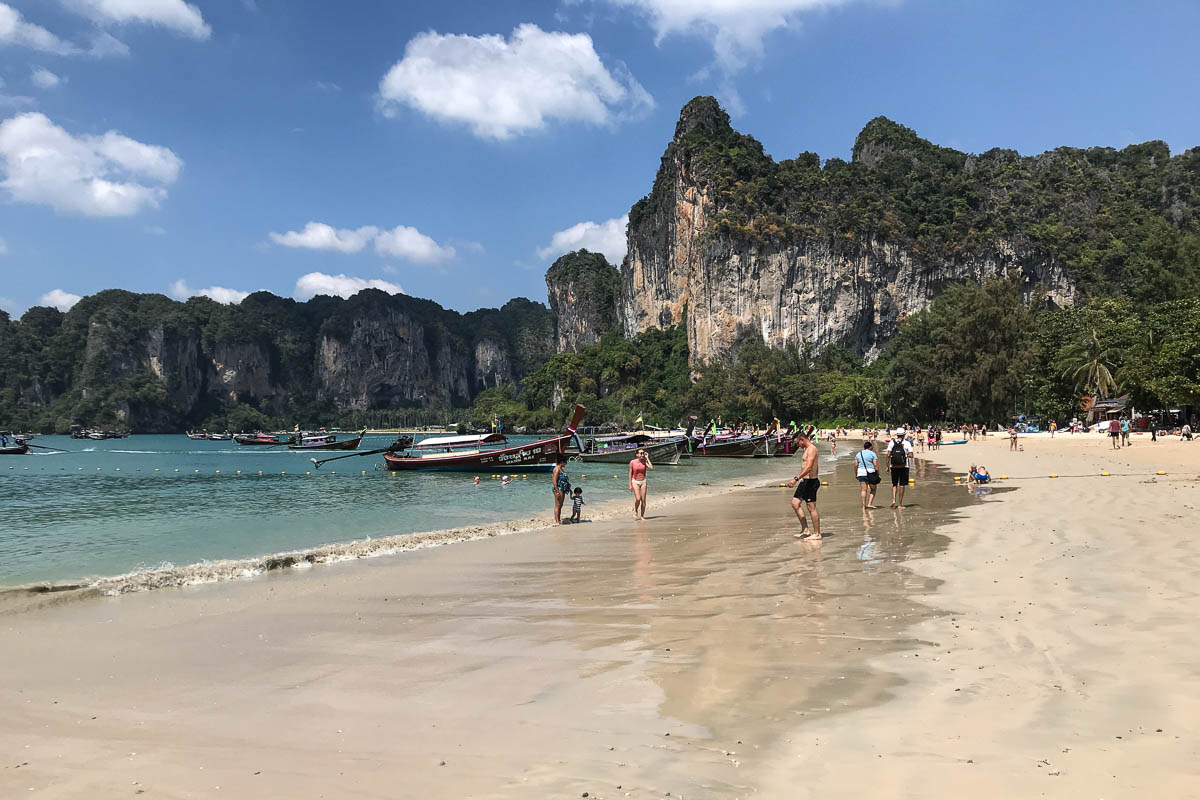
To get from Ao Nang to Railay Beach requires a longtail boat ride for 100 baht ($3.33) per person each way. (Apparently, you can get to Railay Beach by land vehicle, but it’s a very long, convoluted route.) The counter to buy the tickets is right downtown as the main road starts going parallel to the ocean.
The Longtail Boat Experience
Riding on a longtail boat is an interesting experience. The boats are sitting in knee-deep water, and a temporary metal ladder is thrown over the side of the boat. This short ladder doesn’t extend very far into to the water and it isn’t very stable. We did okay getting onto the boat in each direction, and getting out at Railay Beach was no problem.
However, upon our return to Ao Nang, the tide was out so the boats couldn’t get too close to shore, so we were in deeper water, about waist-deep. As Ian went to get out, he jumped off the ladder and misjudged the distance to the bottom and so under the water he went. Luckily, he wasn’t holding the backpack with our stuff, including electronics. Ann had a good laugh about that and proceeded to do the same thing. We all had a good laugh with the ship’s captain and then had to walk back to the apartment soaking wet.
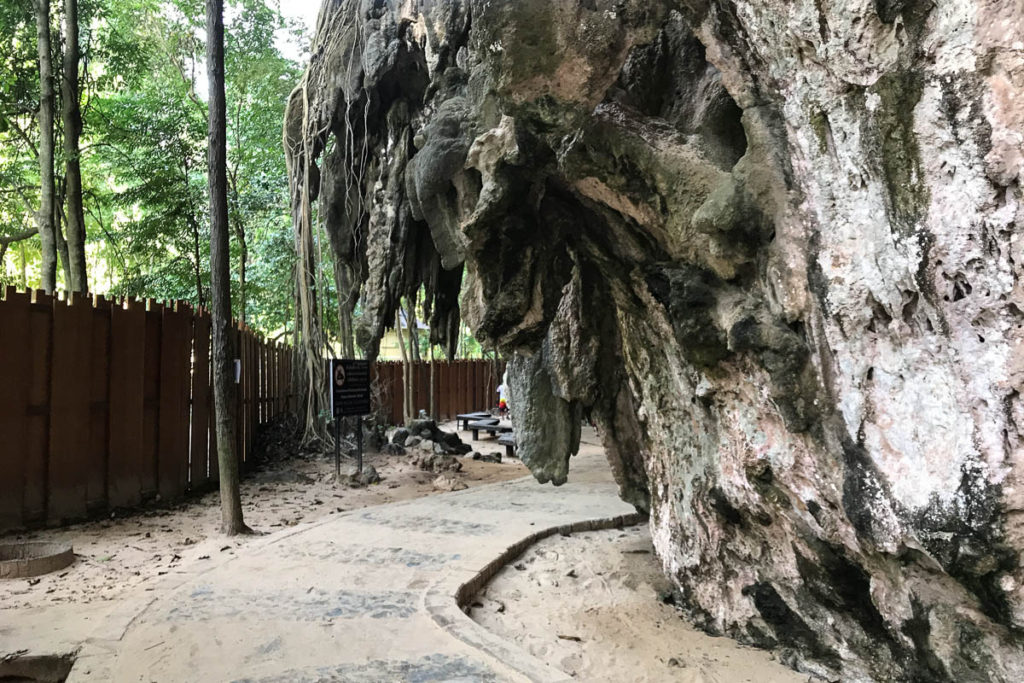
Railay is actually a peninsula with three beaches. Our boat dropped us off at Cave Beach which was pretty but small and very crowded. We walked from there to Railay East which started out as a beach but then became more of a swamp.
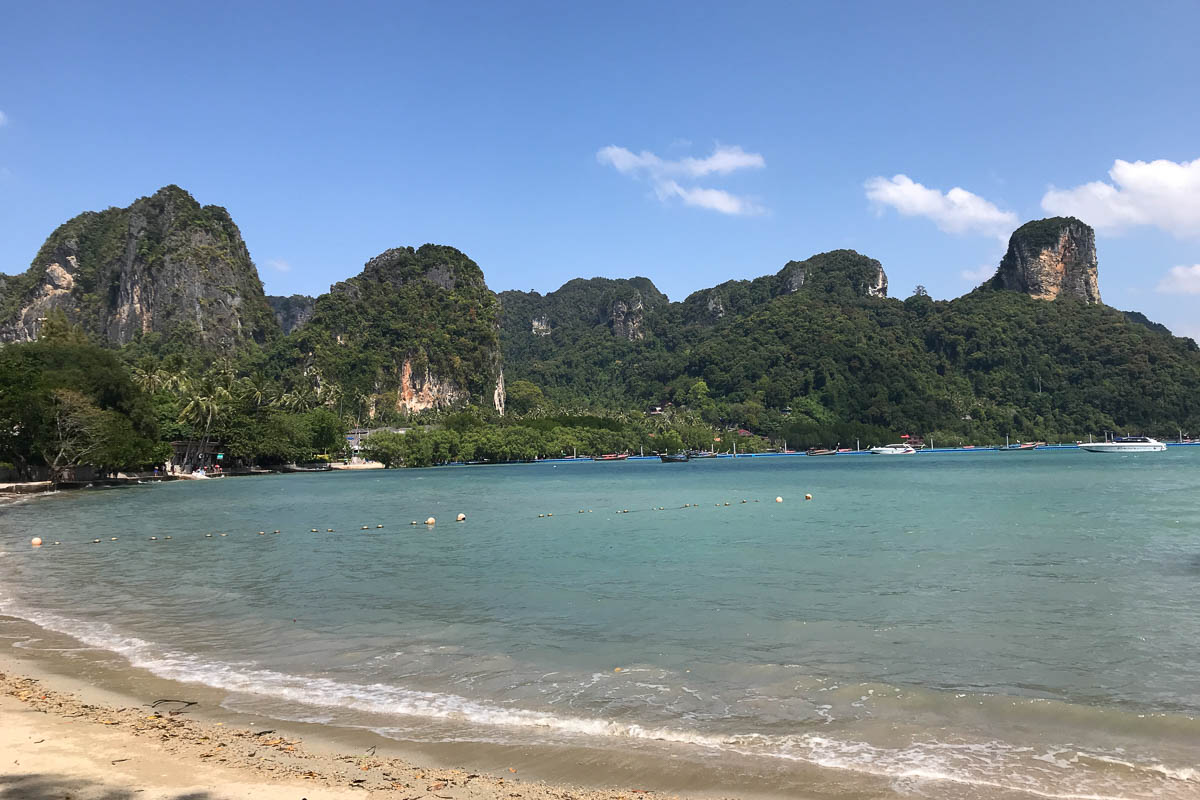

Then walked over to Railay West. Walking between the beaches, we walked past lots of karsts, some with people climbing them.
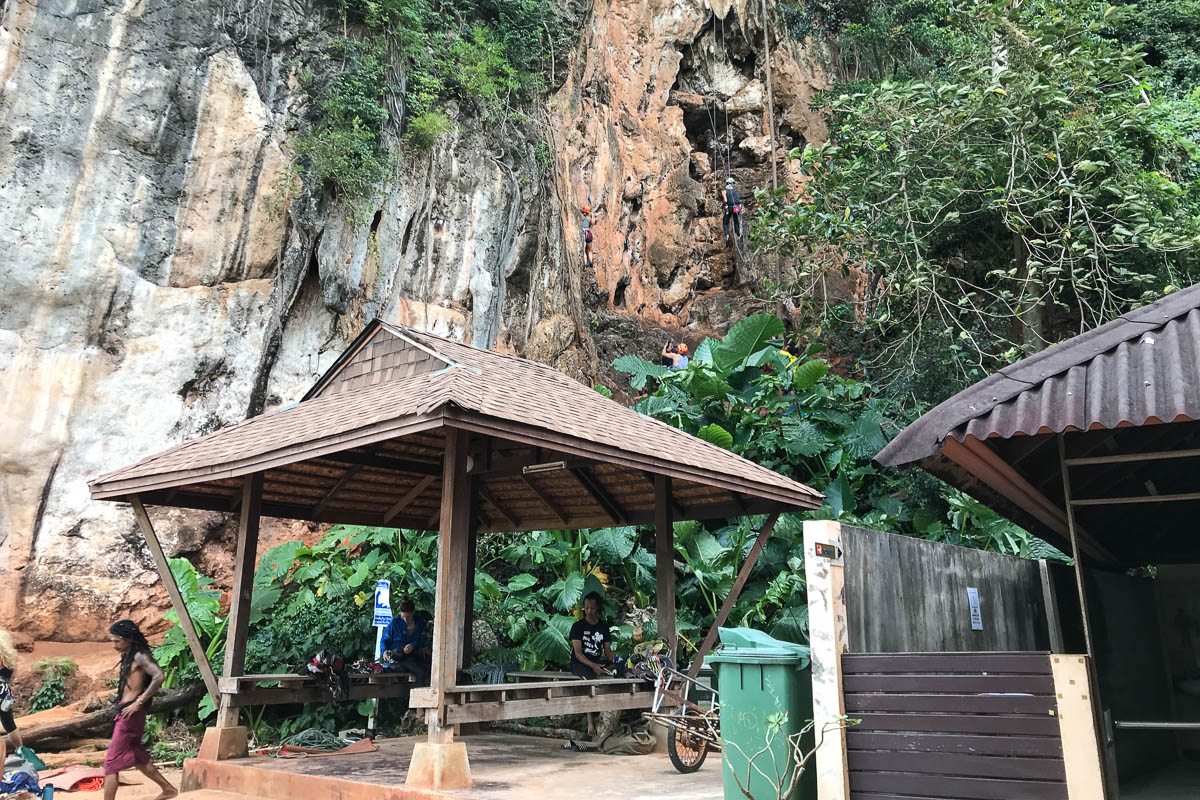
Railay West has many hotels along the beach and lots of restaurants attached to the hotels (expensive) or smaller family-run places which were quite a bit cheaper, actually not much more then we were paying in Ao Nong.
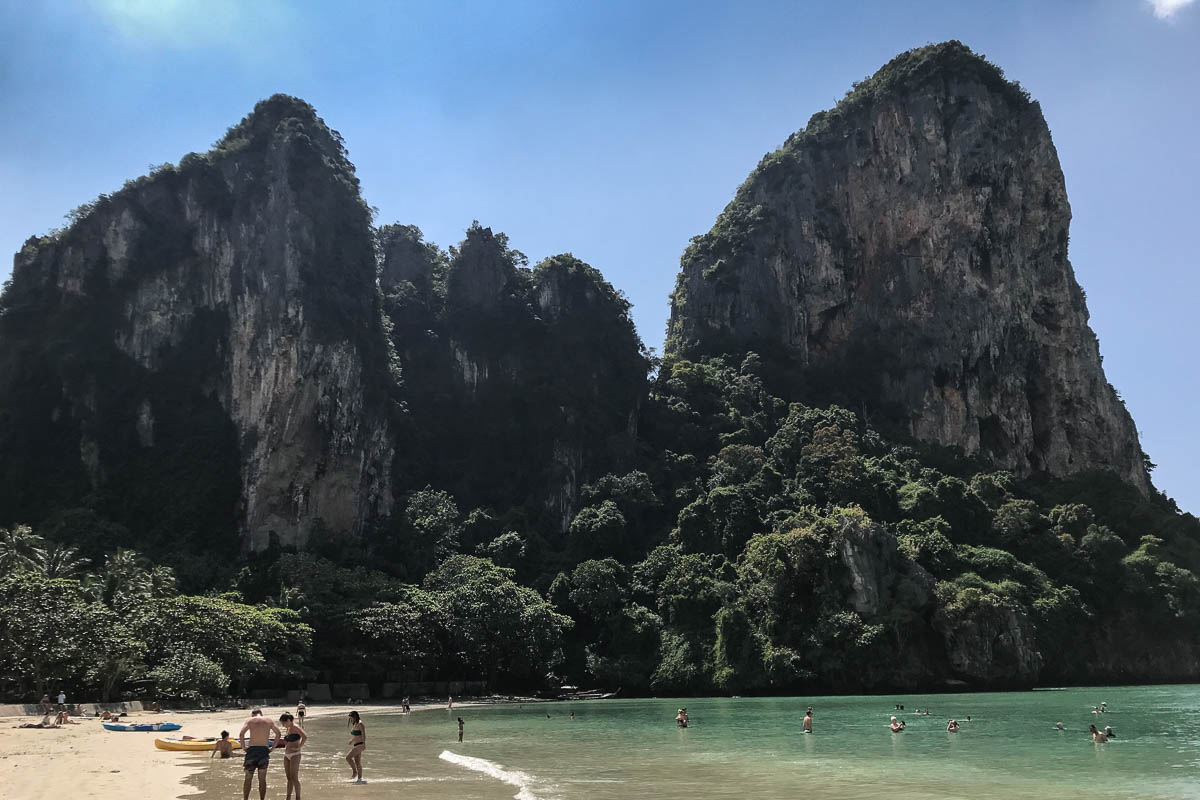
Summary
While we enjoyed our time in Ao Nang, for whatever reason it didn’t grab us as a place to return. Though we met quite a few people who come back every year. If we returned to this area, we’d probably stay at Railay Beach. If that wasn’t affordable, we’d choose an entirely different location.

Next Up: Chiang Mai, Thailand – A Hot Digital Nomad Hub
Ian and Ann


2 Comments
Love reading about your adventures. Never have thought it would be like Latin America except the language and no garbage, sweet.
Looks from the night market that there are a lot of blonde women… Americans? Where were most of the tourists that return from?
Stay healthy! Love, Susan
Hi Sue,
The similarities to Latin America, at least in our eyes, continue as we travel throughout Southeast Asia. Of course, we see differences too.
Yes, in the touristy beach areas, we see many Westerners, mostly from Australia and Western Europe. In the cities, we see Asian tourists as well.
We are taking precautions to stay healthy.
Ian and Ann